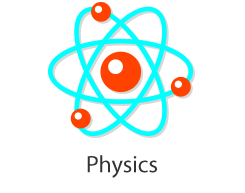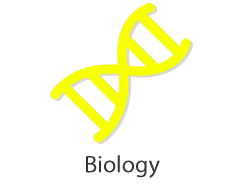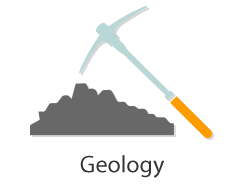USED ONE OF OUR LESSON PLANS?
Fill in our survey for a chance to win a Science North YETI mug! We will draw winners quarterly throughout the school year.
Fill in our survey for a chance to win a Science North YETI mug! We will draw winners quarterly throughout the school year.
Students will use their reading, problem solving, and decorating skills as they piece together this personalized visual story about germs and their immune system.

Using the game, “Two Truths and a Lie”, students will learn the difference between things that are real, true or fact and things that might be made up, lies, or fiction. They will learn that not everything they see online is true, and they will be given tools to spot misleading information.

This lesson weaves traditional ecological knowledge and the scientific principles of power and energy as they apply to a canoe paddle. The activity will explore how a paddle moves a canoe, what type of lever a paddle is, and will expand our understanding of how the principles of force and energy were used by Indigenous Peoples to create tools and resources.

In this lesson, students will explore emerging technologies that are helping farmers take care of their crops. They will then code a robot to navigate a series of farm field maps to mimic caring for their crops.

In this lesson, students use knowledge of multiplication rules to determine the force required to move an object. Once students have determined the force required, they will determine the path with least work required to move the object. Students will then code the path of least work, using provided statements and phrases.

This lesson combines concepts in coding and forces to teach students about conditional statements as well as key vocabulary terms related to forces. This is done by playing a game that gives them choices based on rolls of a dice.

Students will learn about soil characteristics while applying coding concepts. Using pseudo-code representing a coding algorithm, students will sort soil samples and understand how the mind of a computer works. Programmers and computers use conditional (If Else) statements to accomplish various tasks and your student will explore these conditions in this lesson.

Students can experiment with how changing the angle of the light changes the amount of surface area that is exposed to the light.

After participating in our school program, “Mix It Up!” students will have the opportunity to make their own lava lamp using different liquids and solids.

Students will search for tracks on freshly fallen snow to see if they can identify the animals that are still active during the winter months. They will also look at the tracks to see if the animals have special adaptations that allow them to travel on top of snow.

Students will use Ozobots to determine the effects of increasing or decreasing the amount of force applied to an object. The Ozobot is a small, programmable robot that reads and responds to colours on both paper and digital surfaces.

Students will remix a Scratch game to identify forces as either a push or a pull. Scratch is a block-based visual programming language for students. Students can drag and combine code blocks to make a range of programs which include stories, animations, and games.

Students build a small sailboat with simple materials. Then we use the boat to explore the forces acting on it and how it affects the motion of the boat. Students will see how wind is needed to move the boat but can also become too strong for it.

We build a small pool table and use it to study the forces at play. The pool table is built out of a box. By playing pool with marbles students can observe how objects start moving, change direction and stop moving.

Pre Activity
This is a Pre Activity for the Insects in Their Environment School Program at Science North. In “Design a Plant or Animal”, students use craft materials to design and build their own animal or plant while investigating the basic needs and characteristics of both plants and animals. The interdependence of plants and animals within specific habitats is also explored.
Post Activity
This is a Post Activity for the Insects in Their Environment School Program at Science North. In this lesson, students manipulate groupings of coloured items to develop an understanding of habitats and communities and the relationships among the plants and animals found within them. Various scenarios also highlight the effects of human activities on these different habitats.


Pre Activity
This is a Pre Activity for the Pushing and Pulling School Program at Science North. In this lesson, students gather information and present this information in a bar graph; they also interpret their bar graphs and explain their conclusions to others.
Pre Activity
This is a Pre Activity for the Pushing and Pulling School Program at Science North. In this lesson, students are introduced to the structure and function of a pulley and identify pulleys that we see or use every day. As an application, pulleys are used to raise and lower a mini flag.
Post Activity
This is a Post Activity for the Pushing and Pulling School Program at Science North. Using simple tools and materials, students design and create their own pulley system to complete a task. Simple fixed, simple mobile and compound pulleys are investigated.

Post Activity
This is a Post Activity for the What’s the Buzz School Program delivered by the Science en Route Outreach Team. Using the downloaded and printed pages provided, students will design their own honeybee garden. They will then answer the following question, “It is important to protect honeybee habitats because…” and paste it to the bottom of their garden photo.
Post Activity
This is a Post Activity for the What’s the Buzz School Program delivered by the Science en Route Outreach Team. Using the downloaded and printed pages provided, students will play a game called plants on your plate. They will then answer the following question, “It is important to protect honeybee habitats because…”, the students can also draw their answers as a way to visualize their solutions.

Post Activity
This is a Post Activity designed to go along with Fables of Fresh Air (Grade 1 – 3) school program. It reinforces the concepts established in that lesson by letting the students see how “stories” unfold in even just a small area of natural space. This lesson sets the activity, which can last several days to several months.

In this lesson, students will consider ways in which plants are important to humans. They will explore plants in their community while trying to identify their major parts. Students will germinate seeds and record some of the similarities and differences as seedlings develop.

In this lesson, students will explore different types of soil and through inquiry, determine which type of soil is best suited to grow a radish or another quick germinating seed.